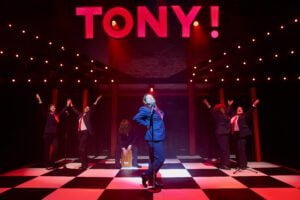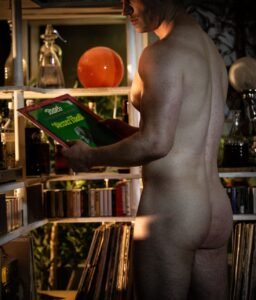Redgraves in The Cherry Orchard from 2000
“Throughout the history of this district there’ve been
only two kinds of people: those who own the land
and those who work on it…. In twenty years the whole
environment will have been transformed… and where
your cherry orchard was, will be prosperity, happiness…”
Lopakhin

Last year at the National, Trevor Nunn directed a very successful production of Gorky’s Summerfolk, often described as the inheritor of Chekhov’s The Cherry Orchard. In Gorky’s play, the Russian bourgeoisie are living in dachas, holiday homes built when estate owners were unable to make agriculture pay without serf labour. In The Cherry Orchard Chekhov shows the folly of the Russian land owning class in refusing to recognise the need for reform.
What Summerfolk does for Chekhov’s play is to put the destruction of the cherry orchard in perspective by showing what it allows to happen. Instead of loss, we see the people enjoying the countryside, many people, instead of one privileged family. The cherry orchard is vast, 2,500 acres, but completely impracticable without serf cherry pickers and packers to enable the harvesting, transport and sale of the fruit. Chekhov’s play will only be seen as a tragedy if we closely identify with the estate owner who loses the estate. Chekhov himself, as a doctor, was frequently unpaid by these landowners who like Ranevskaya, were in debt to all and sundry, often people who could ill afford it with a more modest lifestyle.
Where I am going with this is that Chekhov described The Cherry Orchard as a comedy not the tragedy of the lost trees and the lost estate.
The Cherry Orchard is Chekhov’s last play. His wife Olga Knipper played Ranevskaya for the first time in January and Chekhov died in July. A year later, thousands of workers presented a petition to the Tsar, Nicholas II. Protesters were fired on in St Petersburg by Government troops while the Tsar and Tsarina were at a ball, and over 200 people were killed. We now can look back at Chekhov’s work in the light of the Russian Revolution and try to interpret Chekhovian symbolism. Is the orchard a symbol of Russia? What fascinates in this play is both the personal and the political dilemmas.
The characters are caught in a moment of time, unable to move on emotionally despite the physical journeys they have made. Ranevskaya can only solve the problem of the estate’s mounting debt by hoping that her adopted daughter Varya will marry a rich man. She is still grieving the drowning of her son as a little boy on the estate. She is extravagant and irresponsible despite the debts. She is unable to take advice from Lopakhin, partly because she cannot conceptualise not having the orchard, and partly because of the difference in their station. He shows her how to save the estate by selling the orchard for building. She says, in David Lan’s lucid translation, “Cottages, people trooping out from town to live in them – forgive me, it’s not us.” Lopakhin (Roger Allam), the son of a drunken peasant, but now a successful merchant is infatuated with Ranevskaya after an act of kindness to him as a barefoot boy. There is Yasha the ambitious servant, Trofimov the long term student, Pischik, another impoverished landowner. Firs, the aged footman closes the play, locked in the house, locked in the past. They are representative of different strata of Russian society.
Trevor Nunn has staged this outstanding production in the tiny Cottesloe. The effect is claustrophobic, to increase the intensity, the way in which the characters are trapped. However I do not think that it will suffer when it transfers in the New Year to the more spacious Olivier. Between the scenes, the servants continually move packing cases and luggage, in an almost continuous procession. This gives the production the feeling of a society in transition. From outside we hear the bells of the troika and of dogs barking. All these sounds are heavily nostalgic, anticipatory, expectant, even the sounds from the windows of people who have not yet moved there or the noise of the turmoil of the revolution to come. Inside the house, a music box plays in the nursery.
Maria Björnson’s sets are old and authentic. Antique toys, beautiful chairs, cherry blossoms that fall like snowflakes. The nursery is lit by table top candelabra sometimes blinding you as you try to see the faces in the darkness on the other side of the flickering candlelight. The last act sees the drawing room with overhead hanging lanterns in contrast with the intimacy of the nursery.
Vanessa Redgrave is a contradictory Ranevskaya, obstinate and backward looking but likeable for all that, charming yet foolish. It is an intricate performance, subtle and complex. Nunn has toned down her ebullience to make this a great performance. Roger Allam is her admirer, Lopakhin, played with a Northern accent to differentiate his class. His ambivalence is excellent as he almost proposes to Varya and instead resorts to a displacement activity, discussing the weather. He has succeeded in business but lacks interpersonal skills. Eve Best as Varya works non-stop, worn down by her adopted mother’s extravagance in the face of the debt, an excellent contast with Charlotte Emmerson, sweet and pretty as the ever cheerful Anya. Corin Redgrave has the role of Gaev, slightly potty as the brother who relates everything to a billiard table shot but who has moments of suprising wisdom. The performances from this able cast are a credit to Nunn’s full blown directorial skill.

Production Notes
The Cherry Orchard
Written by Anton Chekhov
Adapted by David Lan
Directed by Trevor Nunn
Cast
Starring:
Vanessa Redgrave
Roger Allam
Corin Redgrave
With:
Maxine Peake
Richard Henders
Michael Bryant
Charlotte Emmerson
Eve Best
James Thornton
William Gaunt
Suzanne Bertish
Ben Miles
Gary Oliver
Seymour Matthews
Peter Eastland
Kate Dyson
Michael Gardiner
Rebekah McGowan
Jennifer Scott-Malden
Kate Wimpenny
Creatives
Director: Trevor Nunn
Design: Maria Björnson
Lighting Design: Hugh Vanstone
Sound Design: Paul Groothuis
Music: Steven Edis
Choreographer: Jane Gibson Information
Running Time: Three hours and 15
minutes with an interval
Closed 31st March 2001
Theatre:
Cottesloe but transferred to the Olivier
National Theatre
Upper Ground
South Bank
London SE1 9PX
Rail/Tube : Waterloo
Telephone: 020 7452 3000
Website: nationaltheatre.org.uk
Reviewed by Lizzie Loveridge
at the Cottesloe
on 30th October 2000



